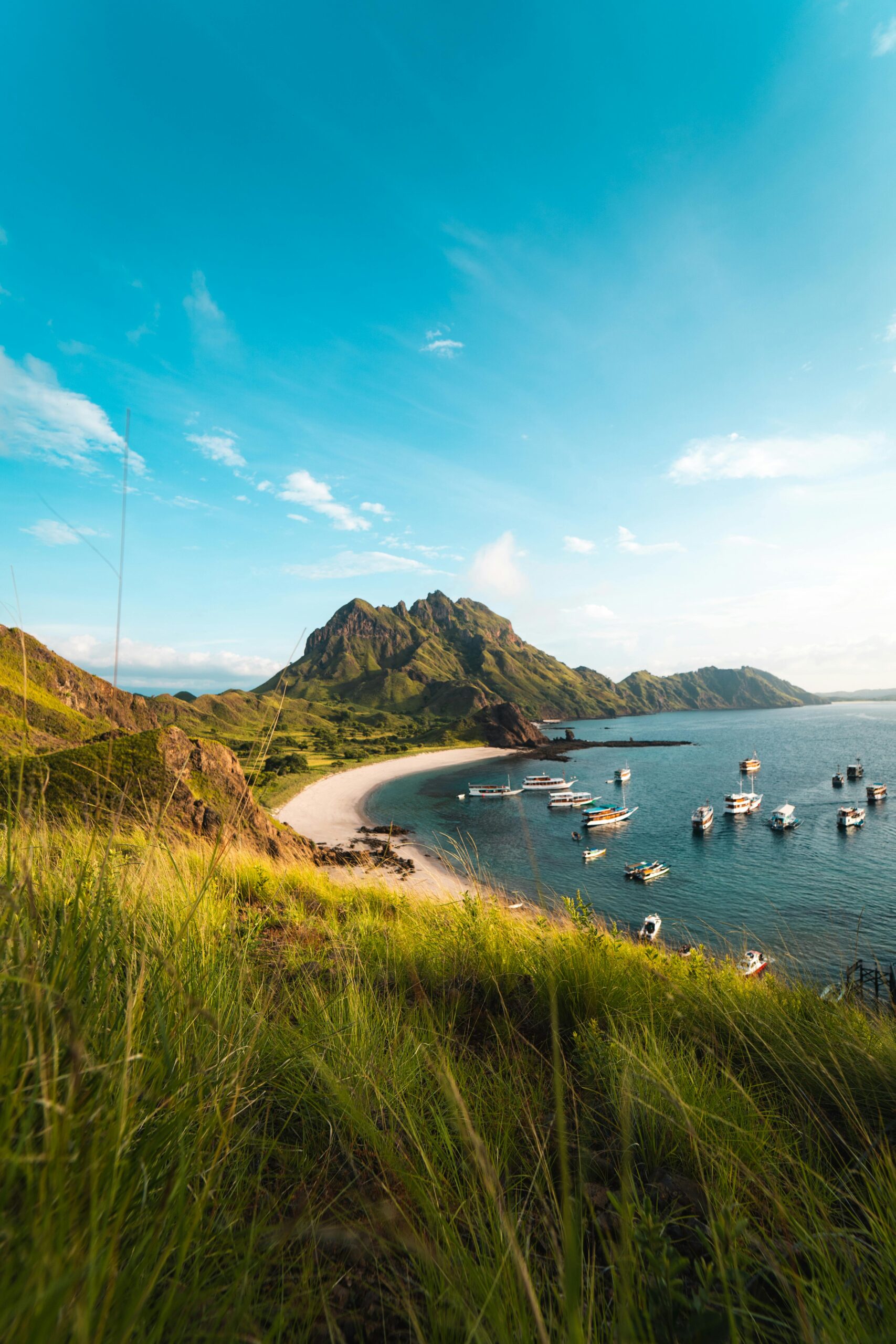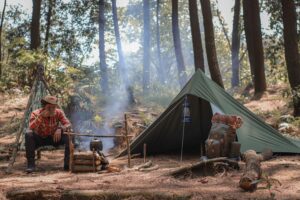Corsica, often referred to as the “Isle of Beauty,” beckons travelers with its breathtaking mountains, turquoise lagoons, cascading waterfalls, rugged cliffs, and quaint villages. Join me on a 10-day road trip as we uncover the hidden gems and iconic landmarks of this captivating island. Follow along as I share my ideal itinerary and memorable experiences from my journey.
My fascination with Corsica dates back to my childhood when I visited the island with my parents. Even then, it left an indelible impression on me as one of the most beautiful places I had ever seen in France. Though my memories are fragmented—a patchwork of picturesque beaches, Corsican chants, wild boars roaming the roads, and the hotel pool—they evoke a sense of wonder and nostalgia. Over the years, I harbored a desire to return, yet never found the time to explore it further.
Corsica, despite its modest size of only 180 kilometers in length, offers a diverse array of landscapes and attractions. While it’s tempting to attempt a comprehensive tour in 10 days, we opted to focus on the southern region to fully immerse ourselves in its charms. It’s worth noting that the mountainous terrain and winding roads may extend travel times, often doubling the duration indicated on GPS navigation systems.

Our adventure began upon landing at Ajaccio Airport, where we immediately set off for Zonza, a quaint village nestled in the southeast of the island. Knowing that we would return to Ajaccio at the end of our journey, we deferred exploring the city until then. As we traversed the rugged terrain, Corsica’s natural splendor unfolded before us—verdant mountains, sheer cliffs, and winding roads—leaving us in awe of the island’s raw beauty.
After a two-hour drive, we arrived in the charming village of Zonza, where we had booked a night at a local inn (which I’ll refrain from naming, as it fell short of expectations). We savored a simple burger while watching the sunset over the rolling hills—an absolutely sublime spectacle that foreshadowed the enchanting evenings to come. However, our stay in Zonza was brief, as we had chosen this location primarily to visit a renowned site in the region: the Purcaraccia Waterfalls. Given its proximity to Zonza, it served as an ideal base for our excursion, with only a 30-minute drive separating us from the cascades.
The Purcaraccia Waterfalls, with their expansive pools, crystalline waters, and natural slides, promised an idyllic retreat. Yet, reaching them proved to be a challenging endeavor, requiring a strenuous hike through rugged terrain. The poorly marked trail necessitated navigation through water crossings and rocky ascents, testing even seasoned hikers. Nevertheless, the arduous journey yielded a rewarding payoff upon reaching the falls—a refreshing oasis amidst Corsica’s rugged landscape. Though visited in July, the crowds were manageable, allowing us to appreciate the breathtaking scenery. I highly recommend ascending above the pools for a panoramic view of the cascades and surrounding mountains—a moment of pure serenity amidst nature’s grandeur.

To reach the Purcaraccia Waterfalls, one must navigate to Col de Bocca di Larone, where a sizable parking area is situated. From there, a trailhead can be found near the first hairpin turn, marked by a small opening amidst the foliage. Following this path through the forest will lead you to the falls.
For accommodations, I recommend staying in the vicinity of Zonza, which offers a picturesque setting and convenient access to the cascades. Personally, I opted for the village of Zonza, located near the falls. This quaint locale boasts numerous cafes, restaurants, and stunning valley views. I particularly enjoyed my stay at Hotel Cantu di Fiumu, which offers an excellent location and value for money.
Continuing our journey, we set our sights on Porto-Vecchio, where we had reserved three nights in Santa Giulia, a picturesque enclave near Porto-Vecchio renowned for its pristine beaches. Our itinerary for the following days promised relaxation, leisure, and idyllic seaside vistas.

Santa Giulia Beach, nestled within a protected bay, stands out as a quintessential destination in the region. With its powdery white sands and turquoise waters, it epitomizes paradise found. Arriving early proved advantageous, as the beach quickly filled with sun-seeking visitors, particularly during the peak summer months. To escape the crowds, we ventured along the shoreline in search of a secluded cove, where we discovered a hidden gem reminiscent of Seychelles’ postcard-perfect landscapes—a true oasis of tranquility.
For those enticed by adventure, Tamaricciu and Palombaggia beaches offer equally enchanting vistas. While the beaches may become crowded, their beauty remains undiminished, inviting visitors to bask in their splendor.
Porto-Vecchio, a bustling town steeped in history, captivates visitors with its charming blend of old-world charm and vibrant ambiance. Exploring the historic center reveals a labyrinth of cobblestone streets, ancient Genoese architecture, and bustling squares. A climb to the Citadel offers sweeping views of the surrounding landscape, while an evening stroll along Place de la République immerses you in the local culture and atmosphere.
To explore the historic center, one must ascend to the top of the citadel. It is advisable to traverse the narrow streets that constitute the town, meander amidst the Genoese remnants and charming facades, and relish in the lively atmosphere of Place de la République as dusk approaches. The citadel exudes charm with its stone or colorful buildings, adorned balconies, and a palpable sense of the city’s history. At day’s end, ascending to Bastion de France for the sunset offers a magical vista of the gulf. Porto-Vecchio, being relatively small, typically requires approximately 2 to 3 hours to fully explore.
Recommended establishments in Porto-Vecchio and its environs for dining and lodging include:
- Le Petit Chose, Palombaggia Beach: Nestled on the white sands of Palombaggia Beach, Le Petit Chose offers an idyllic seaside setting. With a spacious shaded terrace and a menu featuring both simple and refined cuisine.
- U Spuntinu, Porto Vecchio: Situated in the heart of the historic district, U Spuntinu offers a variety of Corsican specialties. Guests can enjoy a large terrace and an ambiance steeped in local tradition. The wine selection is excellent, and the cuisine equally so, exemplified by our experience with a platter of Corsican charcuterie and cheese.
- L’Oasis, Santa Giulia: A beach club located on Santa-Giulia Beach, offering amenities such as large beach beds for leisurely afternoons. While prices may be slightly higher compared to other beach establishments, the quality is outstanding, with all items certified organic and homemade.
- Residence Bella Vista, Santa Giulia: Our haven for three nights, Residence Bella Vista, nestled in the heights of Santa-Giulia, provided an unforgettable stay. These independent cottages offer tranquility and breathtaking views from their terraces. The owner’s hospitality and impeccable service added to the charm.
Bonifacio Located at the southernmost tip of the island, Bonifacio stands as the region’s most historic town. Similar to Porto-Vecchio, the port lies below while the citadel crowns the heights, necessitating a significant ascent to explore the old town. Built on cliffsides, Bonifacio invites exploration, whether wandering its labyrinthine streets or strolling along the coastline to admire the cliffs and sea. Notable sites within the citadel include the Aragon Steps, an unusual feature comprising 187 steps carved into the rock at a 45-degree angle, purportedly constructed overnight by the Aragonese king to besiege the town.
Notable attractions include the Aragon King’s Staircase, a remarkable 187-step structure carved into the rock, and panoramic viewpoints overlooking the bay.

For exploring Bonifacio, various options are available: by land or sea, with both highly recommended. By land, a drive to Petit and Grand Sperone beaches offers stunning vistas of Bonifacio and its cliffs, while by sea, boat excursions provide access to caves, coves, and the coast.
The Lavezzi Islands, comprising around a hundred islets, constitute a natural reserve known for crystalline waters and rugged coastlines. Despite its allure, visitor experiences may vary, with crowded conditions and less pristine beaches encountered during peak seasons. Boat excursions, such as those offered by SPMB at €37 per person, provide access to Lavezzu Island, where visitors can explore on foot before returning via a scenic cruise around the Gulf islands and Bonifacio.
Sartène, dubbed “the most Corsican of Corsican towns” by Prosper Mérimée, retains its authenticity and medieval charm, with a compact historic center offering a glimpse into the island’s past. Highlights include the Scaledda Bridge, gateway to the fortified village, and the central Porta Square, where locals gather to enjoy sunset views over the surrounding hills.
Recommended lodging options in Sartène :
- La Bergerie d’Acciola: A traditional Corsican restaurant housed in a former olive oil mill, offering authentic cuisine amidst a rustic farm setting.
- Hôtel des Roches: Located in the heart of Sartène’s historic center, this hotel offers clean and quiet rooms, with breathtaking valley views from its panoramic terrace.
Corte, the historical capital of Corsica, situated centrally on the island, boasts a rich history and picturesque setting. Notable attractions include the Restonica Gorges, although we were unable to explore them fully due to time constraints, and the Citadel, now home to the Regional Museum of Anthropology. Exploring Corte’s labyrinthine streets, vibrant buildings, and historic sites such as Ghionga Grocery, one of Europe’s oldest, offers a glimpse into the island’s heritage.
The domicile still bears numerous bullet impacts, remnants of its tumultuous past.
Ajaccio, the capital of Corsica, holds distinction as the birthplace of Napoleon Bonaparte and as the first French city liberated during World War II. While our exploration was limited, the city boasts numerous museums.
Our focus centered on the historic center, meandering aimlessly through the port and Ajaccio’s main beach. Despite resembling other Mediterranean cities like Cannes and Nice, Ajaccio’s evening ambiance is notably livelier, making it a prime destination for nightlife enthusiasts visiting the island.
The Calanques de Piana, or Calanches in Corsican, were a non-negotiable stop during my Corsican sojourn. This awe-inspiring landscape features towering ochre cliffs seemingly poised to merge with the sky and sea.

Various options exist for exploring the Calanques de Piana: by sea, land, or even air. Personally, I opted for the terrestrial route, traversing the coastal road by car from Porto to Piana, a route offering breathtaking vistas. However, for those opting for a maritime excursion, departure points include Porto (our accommodation) or Ajaccio, with Porto being particularly convenient for accessing the calanques. Though Porto itself lacks significant attractions, its proximity to regional points of interest is advantageous.
For travelers, like myself, journeying to the Calanques de Piana by car, the route is straightforward, comprising a single road linking Porto to Piana. However, caution is advised as the road is winding and may unsettle those prone to vertigo. On road, “Les Roches” restaurant offers a panoramic terrace boasting sublime views, although reservations are advisable due to its popularity. It’s worth noting that swimming is prohibited within the calanques, necessitating a short distance to the nearest beaches, Ficajola and Arone.
For hiking enthusiasts, the Capo Rosso trail is recommended, offering approximately 3 hours round trip to reach the Genoese tower and behold a unique panorama of the calanques. While time constraints precluded our participation, it is reputed as the region’s premier hiking experience. Instead, we opted for a shorter trek from the Tête du chien parking lot, a thirty-minute jaunt culminating in a stunning overlook of the bay and its calanques.





